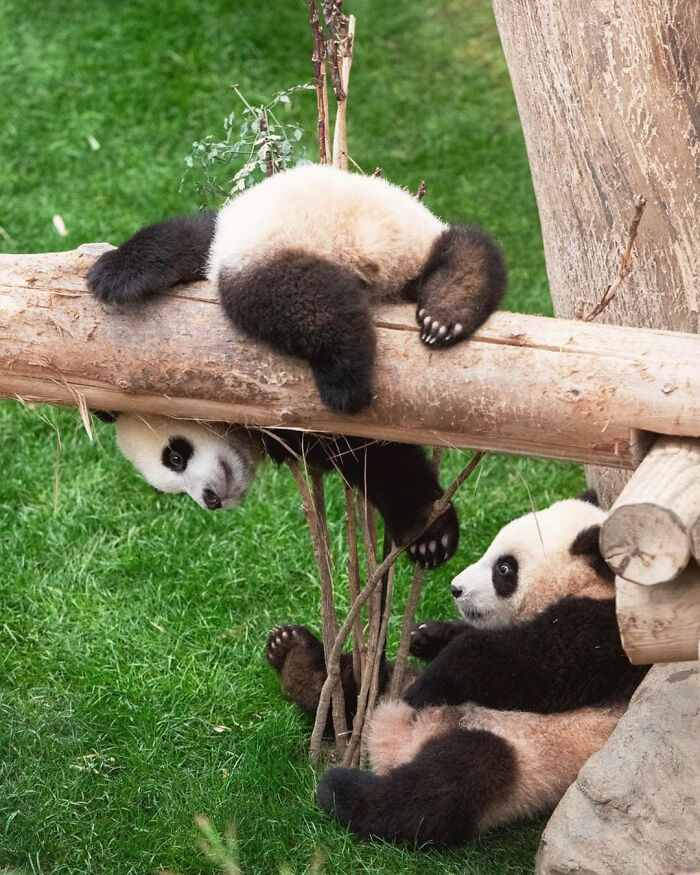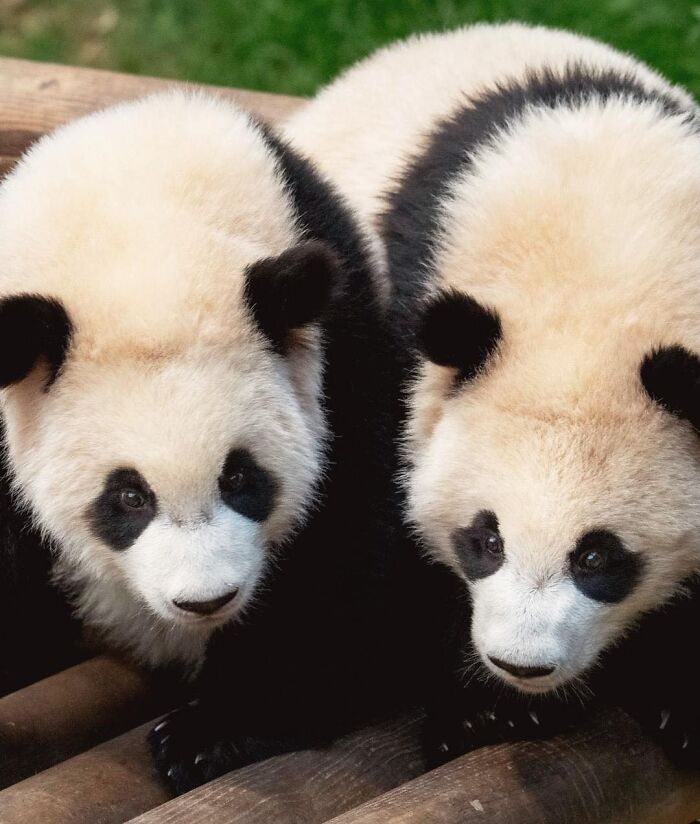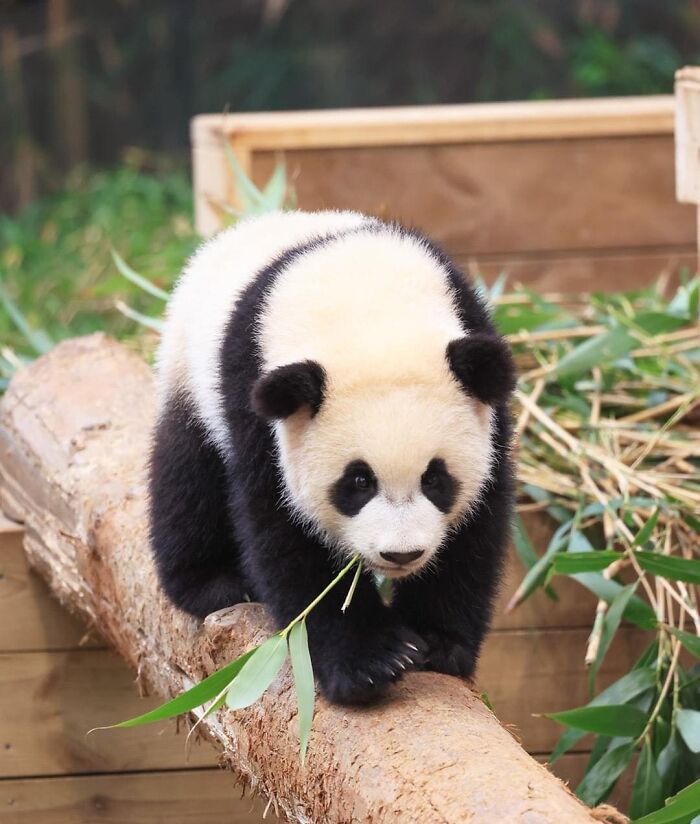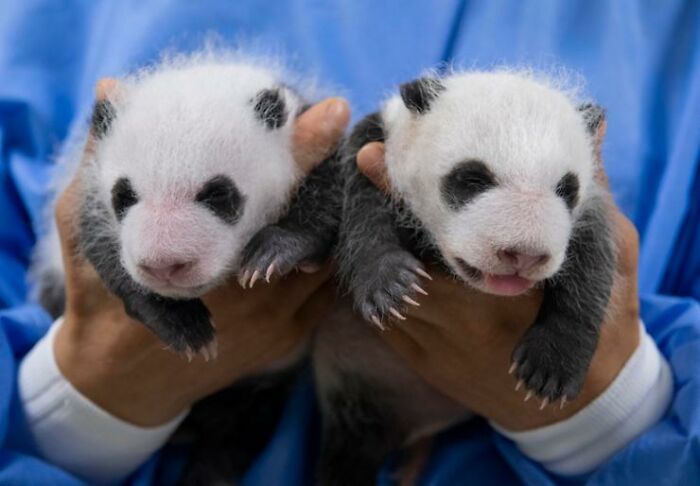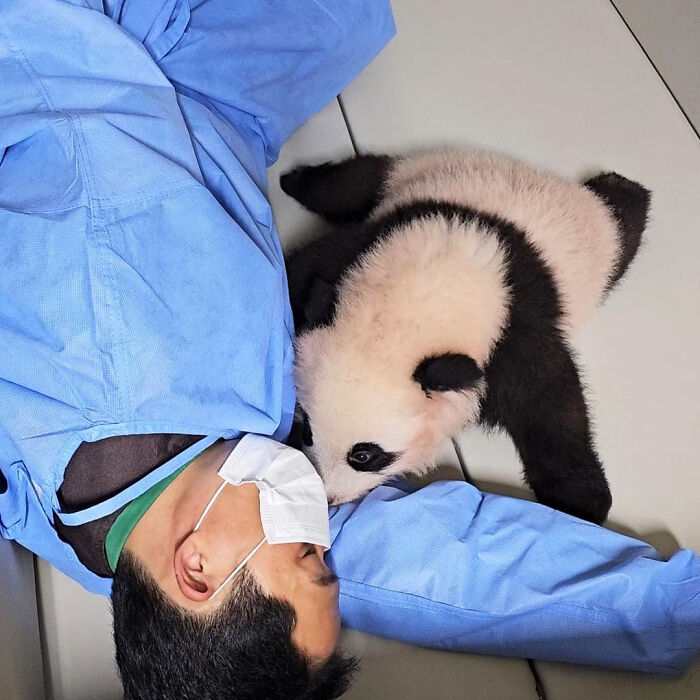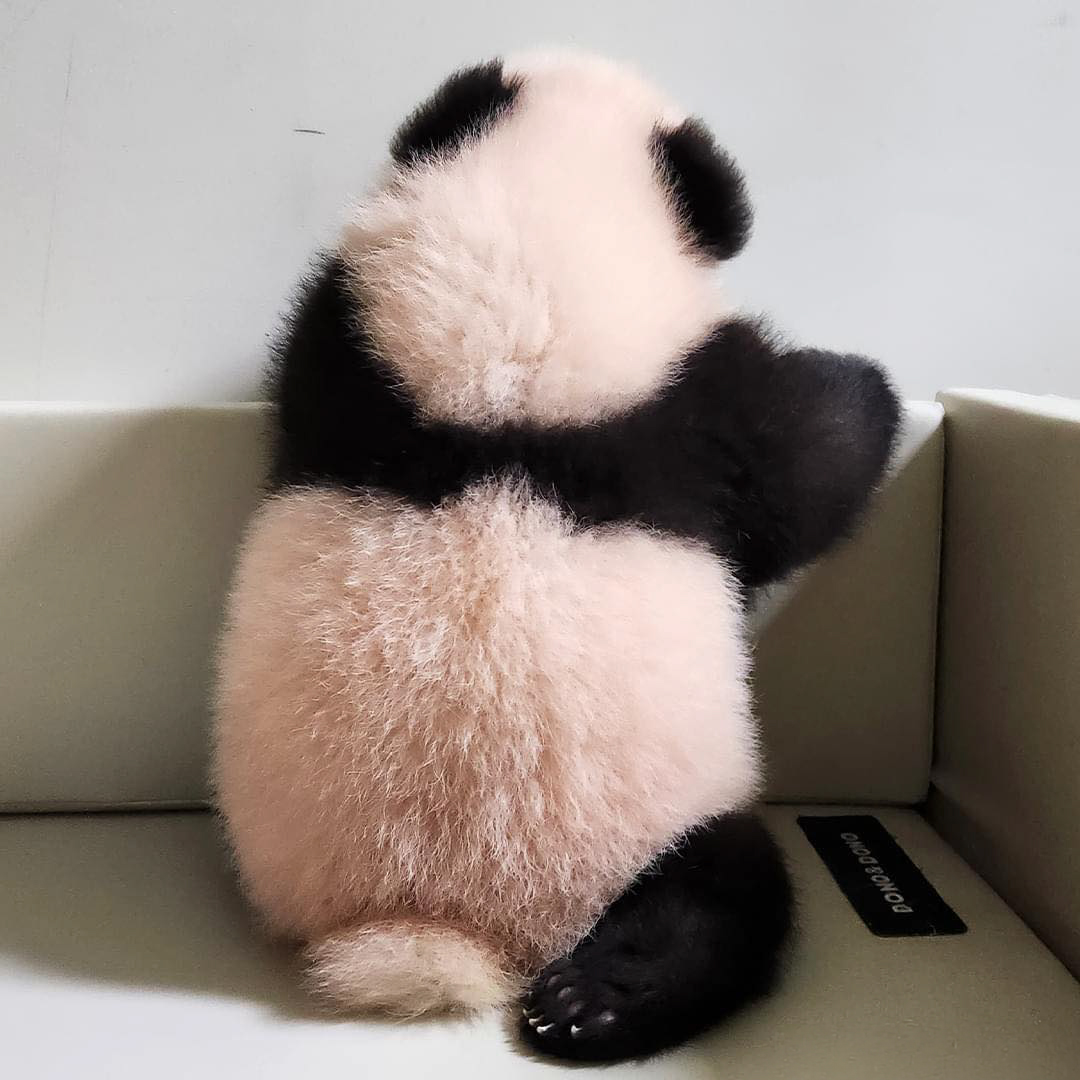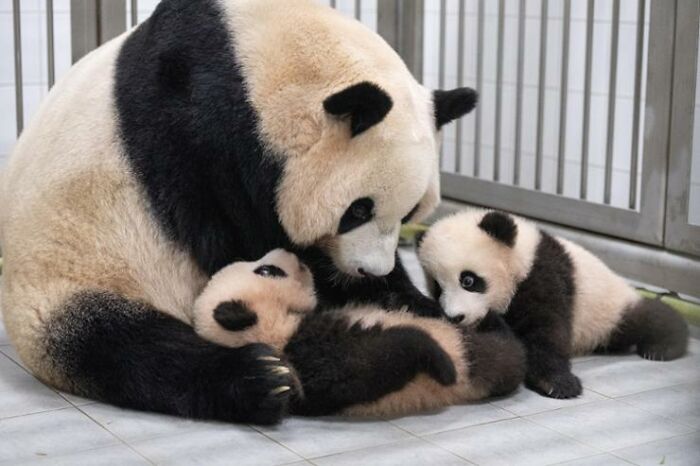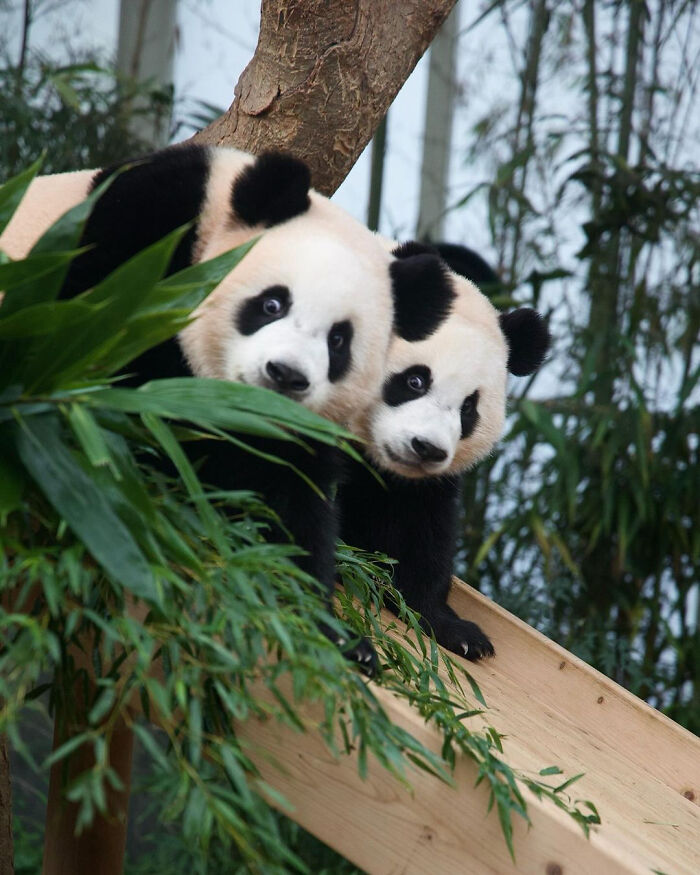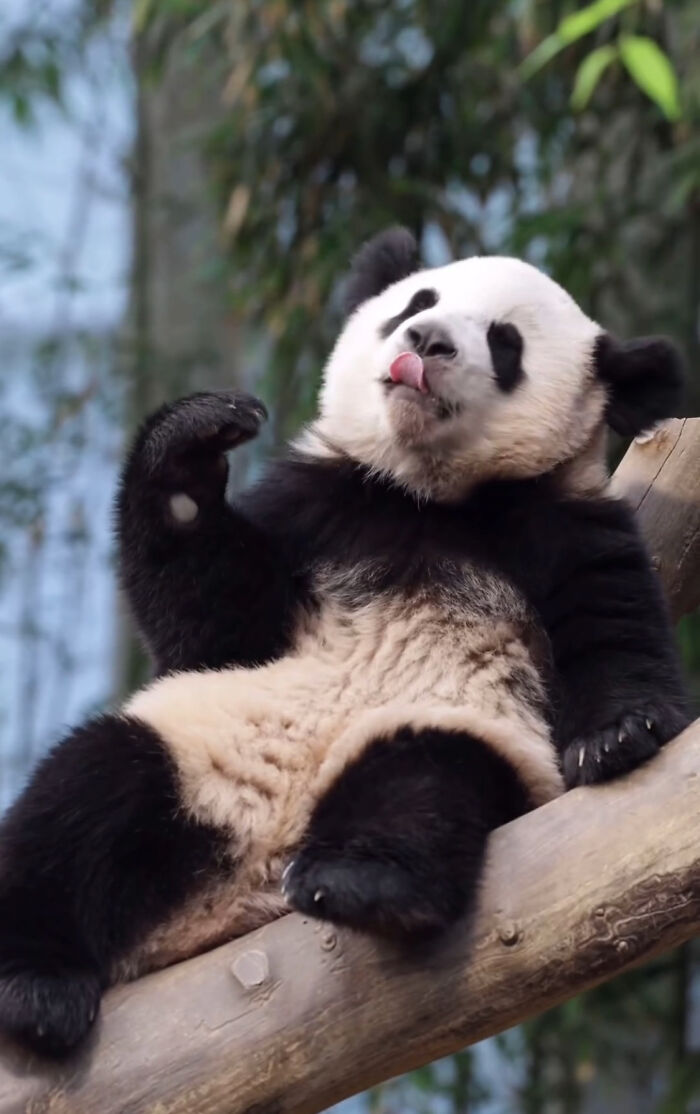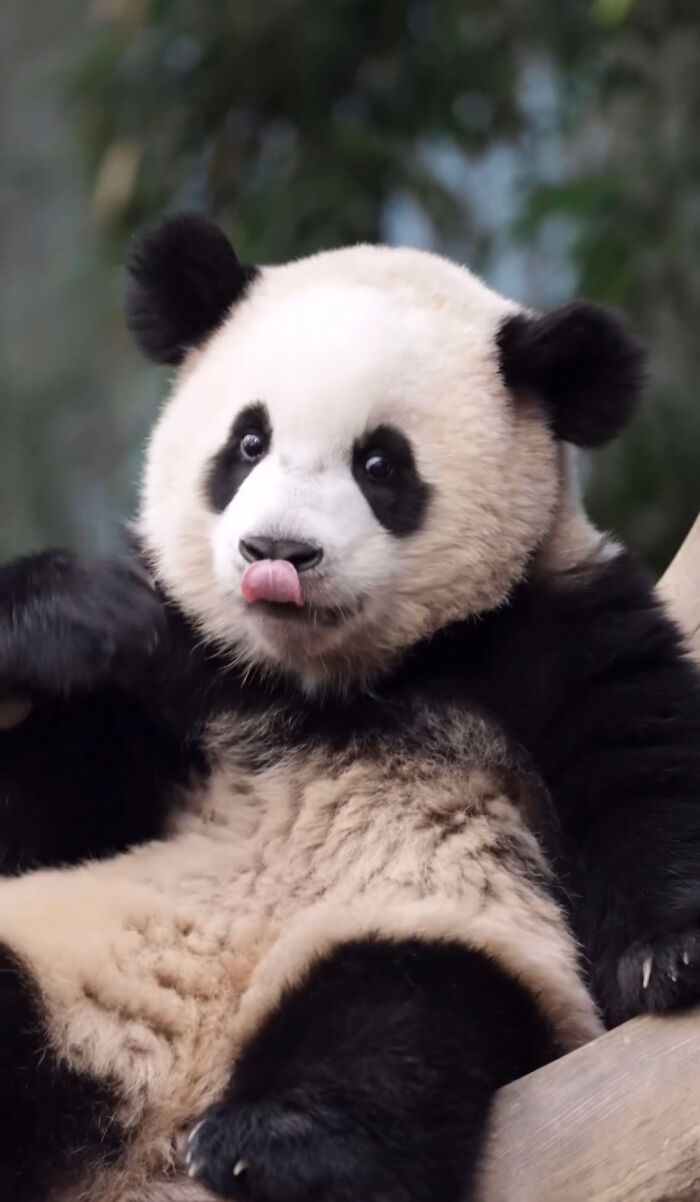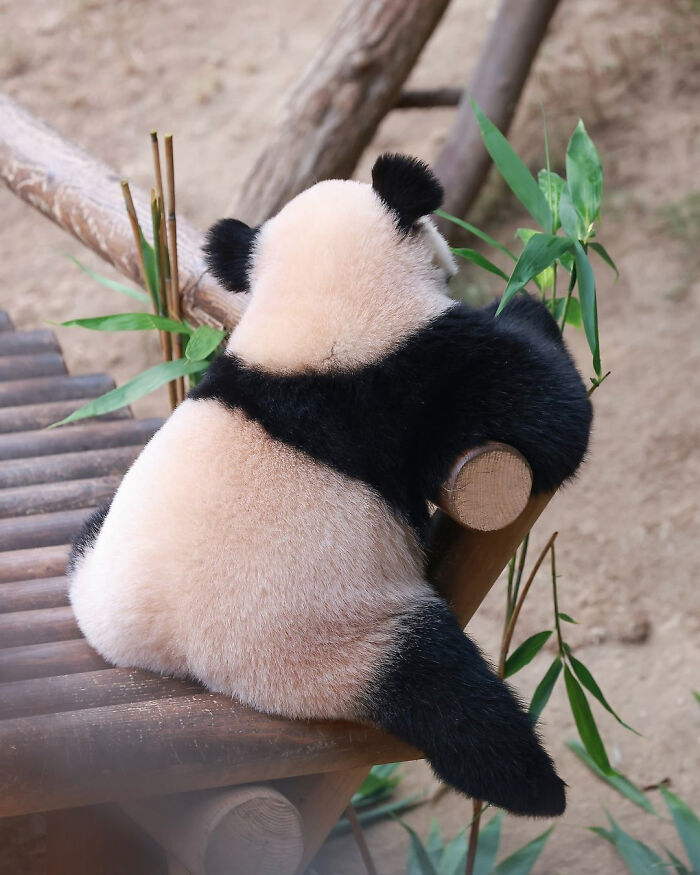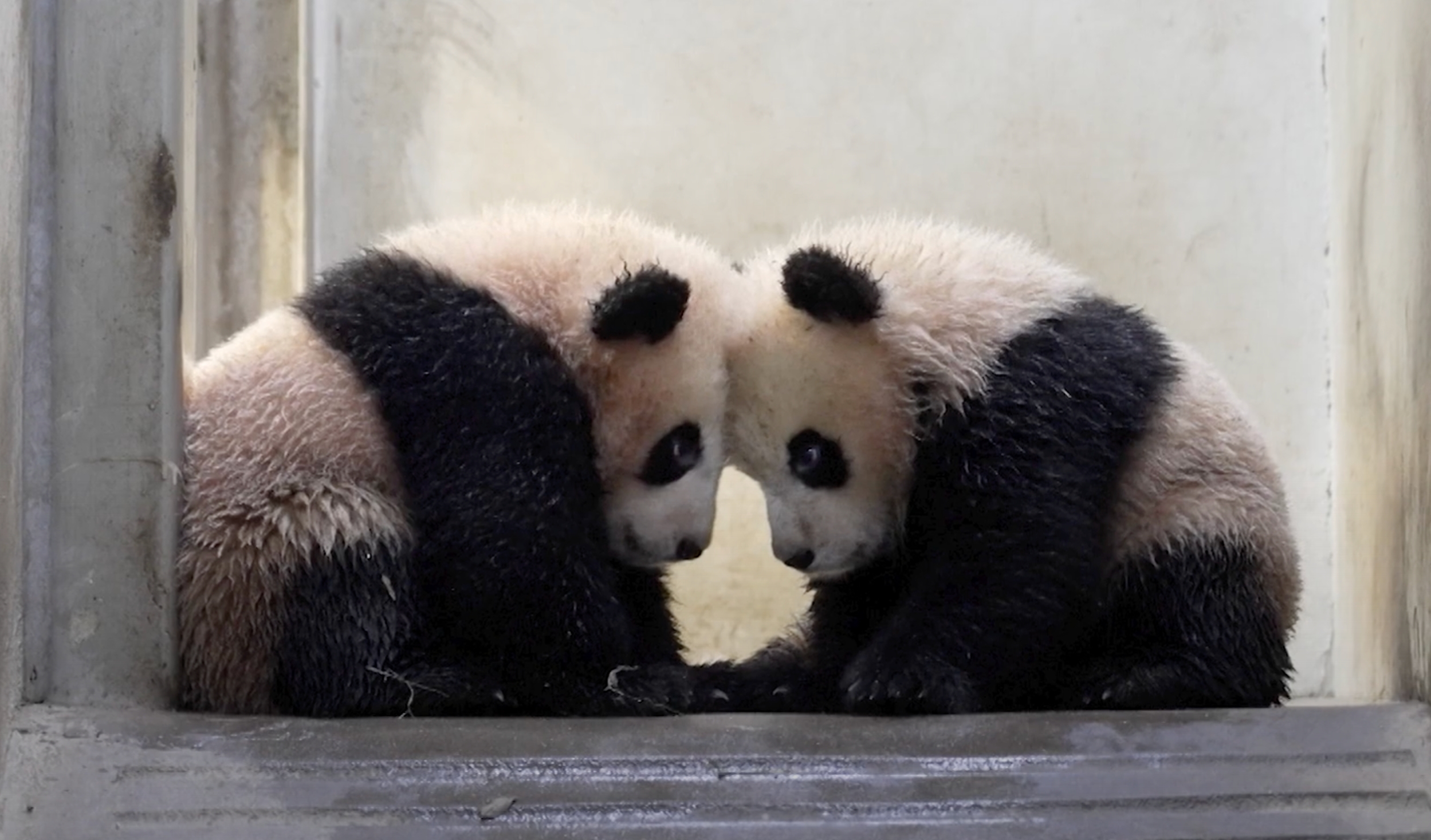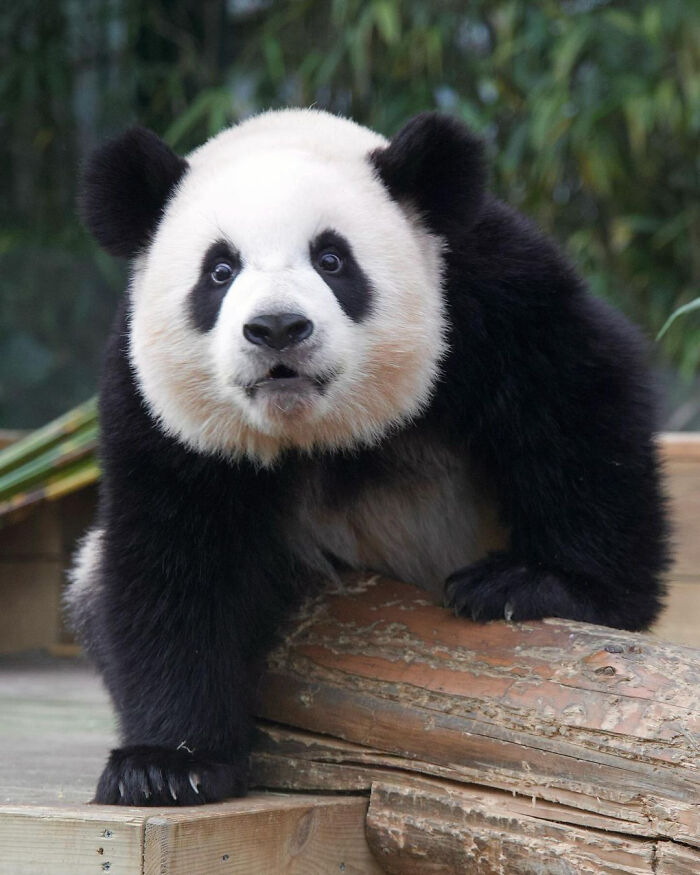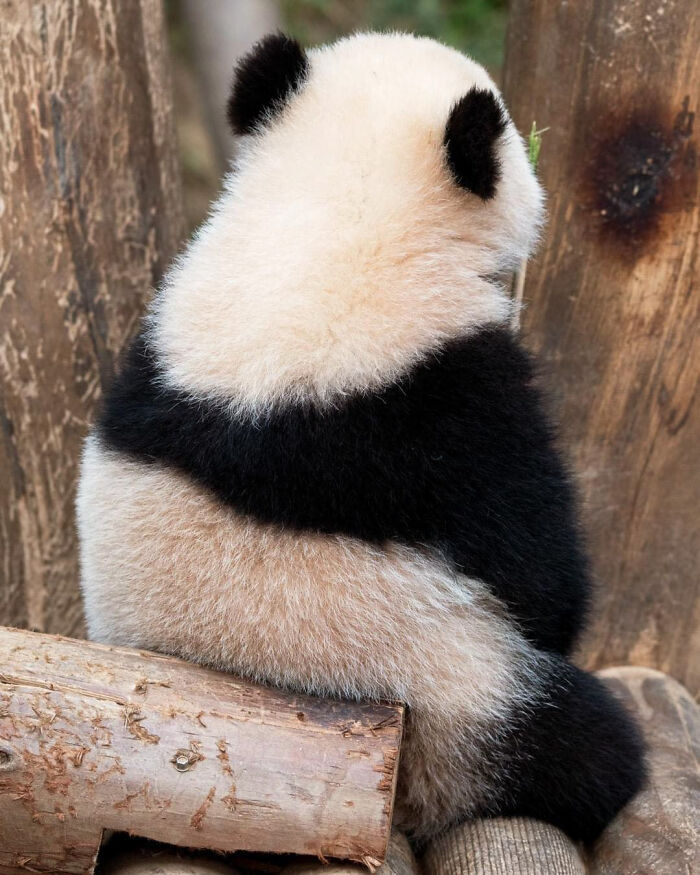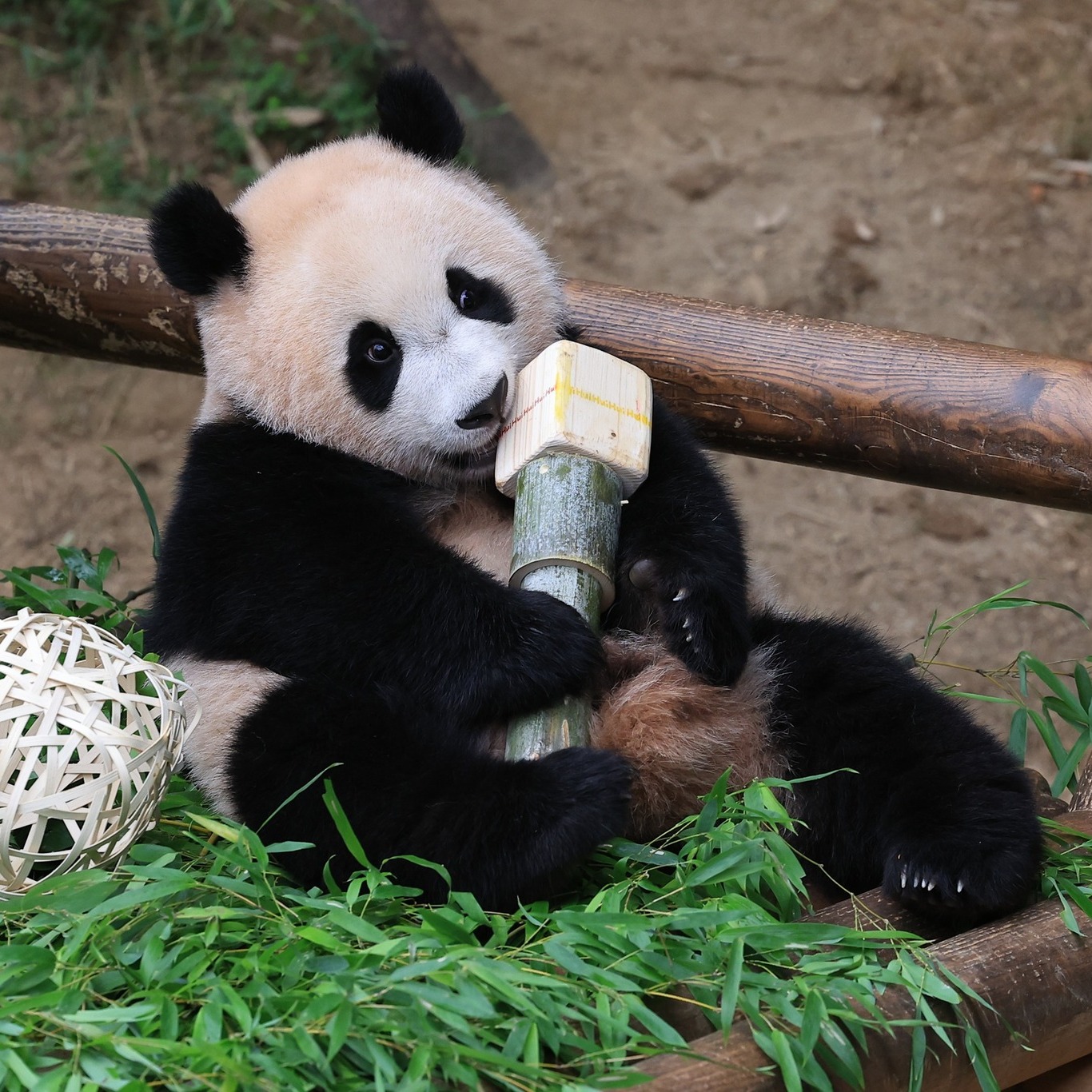Two baby pandas, Rui Bao and Hui Bao, are probably the cutest and the most adorable clumsy twins in the world. All you have to do is to take a look at all these countless videos and photos shared on the internet and a huge boost of dopamine is guaranteed! More info: @fuaege
Korean baby giant pandas Rui Bao and Hui Bao, born on the 7th of July at Everland theme park, are probably the cutest twins in the world
Share icon Image credits: @fuaege Share icon Image credits: @fuaege Share icon Image credits: @fuaege Share icon Image credits: @fuaege These two adorable pandas were born on the 7th of July and were the first twin giant panda cubs born in the country. Their names were chosen through a public selection process that lasted 43 days, in which around 700,000 people cast their votes. The final decision was to call them ‘treasures’: Rui Bao means “wise treasure” and Hui Bao means “shiny treasure.” I guess it’s important to mention that giant pandas are born prematurely and have a low initial survival rate. Therefore, they are usually named only 100 days after their birth, as their health stabilizes. “It has been 100 days since they were born and that means they’re in stable condition,” Kang Chul-Won, the panda keeper, shared when the twin sisters appeared in public for the first time. “But they still have to drink milk and we need to take good care of them because there’s still a long way to go.” When they were born, Rui Bao and Hui Bao weighed only 180g and 140g, but now, with each day, they are getting bigger and stronger, along with revealing the difference in their characters: Rui Bao is active like her father Le Bao, and Hui Bao is calm and gentle like her mother Ai Bao.
Rui Bao and Hui Bao were the first twin giant panda cubs born in the country
Share icon Image credits: The Korea Times Share icon Image credits: Thông Tin Hàn Quốc Share icon Image credits: Thông Tin Hàn Quốc Share icon Image credits: The Korea Times Share icon Image credits: The Korea Times While Rui Bao and Hui Bao still need a lot of care, this can be not only sweet but truly challenging as well, since the twins are always very curious and can’t stay put for long. If you are wondering what it’s like to be a keeper for these two baby sisters, you can find a glimpse of it here. Since more and more people across the world see videos of giant pandas as a perfect way to relieve stress and improve their mood, giant panda keeper has also become a popular profession. “Besides keeping their living environment tidy and clean, we giant panda keepers also need to look after them day and night and check their health at any given time, so that we can timely respond in case anything goes wrong,” shared Li Zixiao, who is a giant panda keeper at Nanshan Zhuhai. “They often eat and play for an hour, and then sleep for two hours, the cycle is repeated day and night,” Li said and added that this lifestyle may look enviable, but it means hard work for keepers. He usually gets up at 5:30am every day to prepare breakfast for the two giant pandas Hua Li and Xing An, before eating breakfast himself. An adult giant panda can eat about 25 kilograms of bamboo a day. Therefore, the keepers have to carry clean bamboo for each giant panda several times per day.
Always curious and adorably clumsy, the twins are going viral all over the internet
Share icon Image credits: @choco.bao_ Share icon Image credits: @fuaege Share icon Image credits: @fuaege Share icon Image credits: @worldwide._.baofamily Share icon Image credits: Kritter Klub Probably not everyone knows that the giant panda’s scientific name is Ailuropoda melanoleuca, which means “black and white cat-foot”. They can grow between 1.2m and 1.5m, weighing between 75kg and 135kg, and their body shape contributes to their clumsiness. Round bodies and short limbs make pandas easily fall out of balance and roll, yet scientists have discovered that they genuinely seem to enjoy it. Interestingly enough, giant pandas are not quiet animals at all, since they can bleat, roar, growl and honk! They are good swimmers and remarkable climbers. “Without long limbs, it’s difficult for them to climb, so they end up using their most massive appendage… their head,” explained Andrew Schulz, a conservation physicist at Georgia Tech. “By using their head and neck to grip the pole, they are able to successfully climb, which is unlike any other species I’ve ever seen,” he added. Pandas aren’t quick, so it is vital for them to have climbing ability.
The twin pandas love to play with their zookeeper at Everland Panda World in Yongin, Gyeonggi Province
Share icon Image credits: The Korea Times Share icon Image credits: choco.bao_ Share icon Image credits: @fuaege Share icon Image credits: @fuaege Share icon Image credits: @fuaege According to the World Wildlife Fund, giant pandas are the rarest members of the bear family and there are only over 1,800 pandas left in the wild. Thanks to zoos and sanctuaries, like Everland in Yongin, people not only can enjoy the cutest and the most adorable animals in the world, but also are provided with education about pandas’ conservation and what we can all do against their extinction. Anyone can write on Bored Panda. Start writing! Follow Bored Panda on Google News! Follow us on Flipboard.com/@boredpanda!
